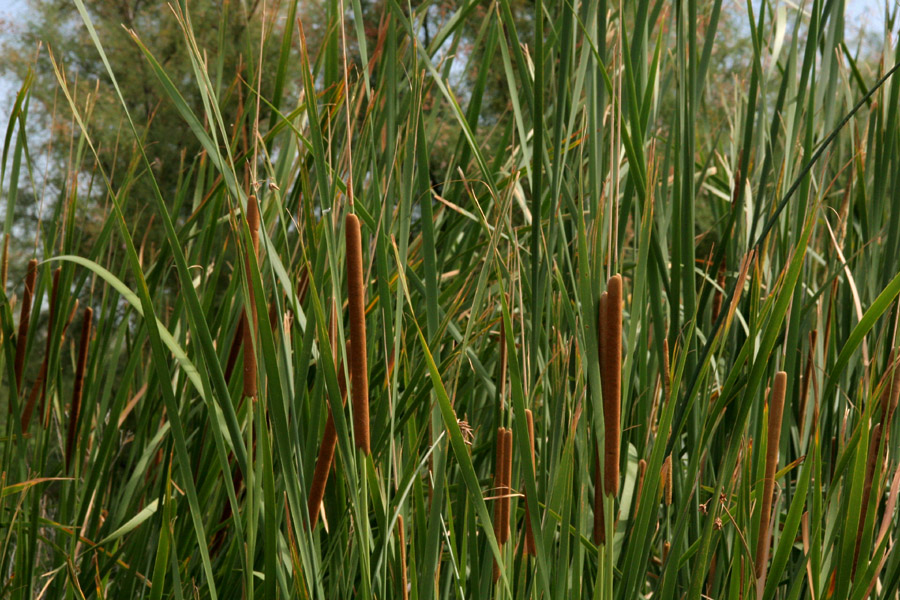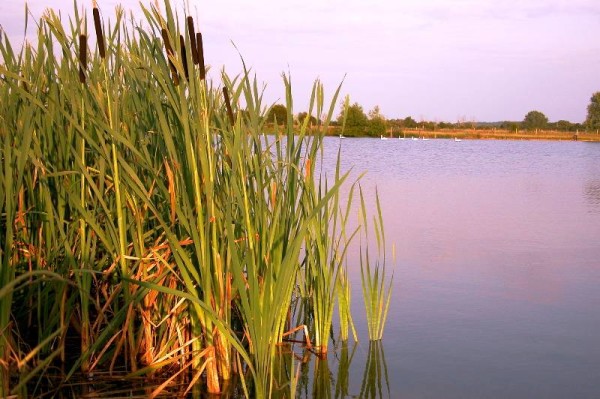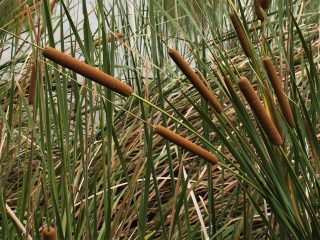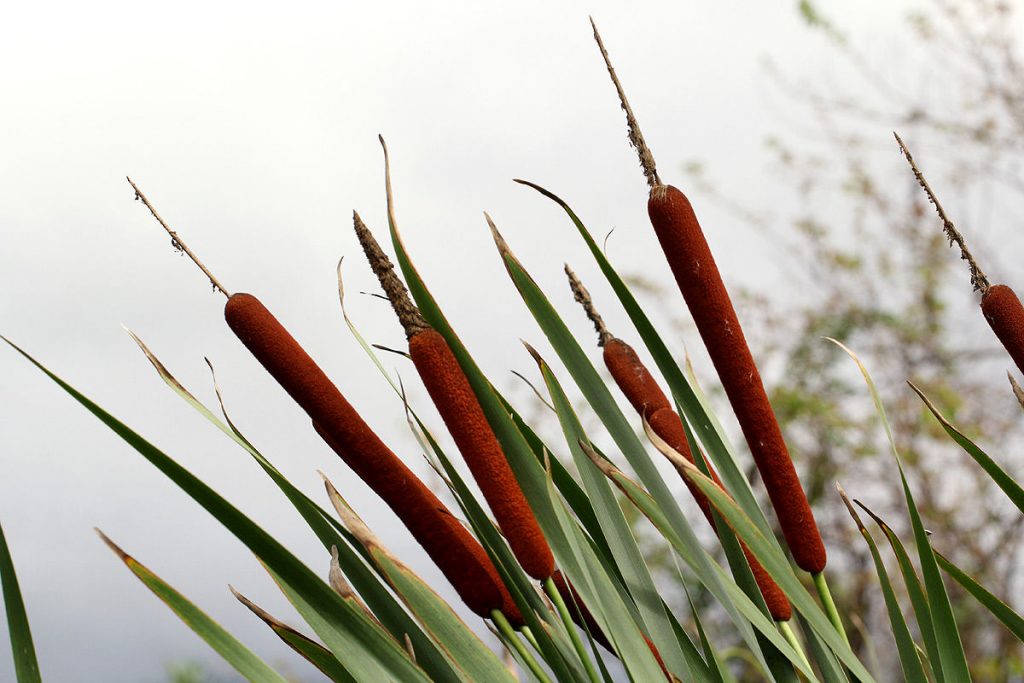
Typha capensis is a monoecious (having the reproductive organs in separate structures but borne on the same individual), perennial marsh herb which has a very fast colonizing habit by means of creeping rhizomes. The stems are erect and simple, and terminate in dense, cylindrical flower-spikes.
The leaves are long, bluish grey to green, strap-shaped and with parallel veins. Leaves vary in length from 0.5 to 1.5 m and more. The inflorescence is a dense spike of closely packed flowers, yellow at first, turning brown later. Flowers are unisexual and minute. The male flowers are in the upper portion and female flowers in the lower portion of the spike. The flowers themselves, lacking tepals, are reduced to 1 carpel (female flowers) or 2-5 stamens (male flowers), packed together with hairs.
The fruit is 1-seeded, minute and has many hairs which aid wind dispersal. Typha capensis flowers from December to January. Bulrushes are found throughout the world and southern Africa. It is most common in aquatic situations whether in standing or slow-flowing waters. Marshes, stream banks, dams and lakes are most commonly inhabited by Typha capensis. The muddy substrate of these water bodies helps the plants to anchor its rhizomes firmly.
A decoction of the rhizomes is used for venereal diseases or during pregnancy to ensure easy delivery: decoctions are taken orally or applied externally to promote expulsion of the placenta. It is also said to strengthen uterine contractions. It is also taken to promote fertility in women, to enhance male potency and libido, to improve circulation and for diarrhoea and dysentery. The fleshy, spongy rhizomes are dug up and may be pounded to a meal and used as a source of starch.
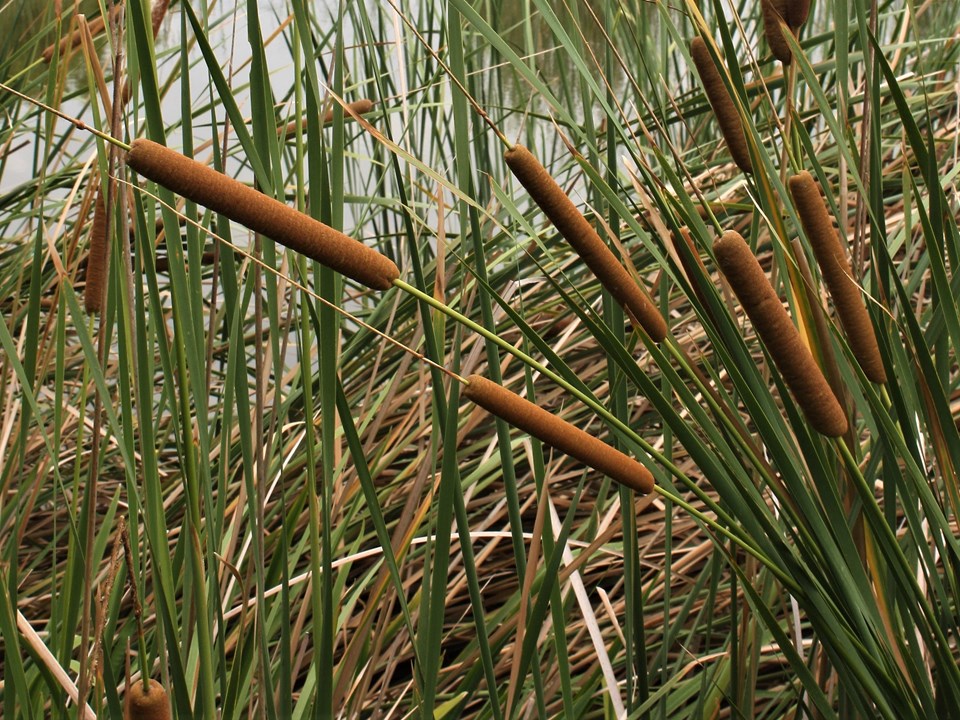
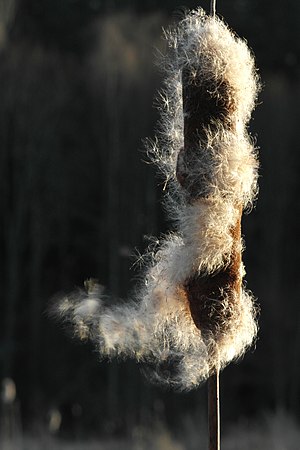
The pollen may also be used as a high-protein food. The leaves are used to make hand brooms and are also used to some extent in weaving and thatching. At a symposium on Typha held in cape Town in 1989, it was reported that Typha, despite its potential to be an invader, does have several economic benefits. It can be used as a subsistence crop as all parts of the plant can be eaten and is grown as a speciality food source in America. The pollen is used to produce a plant growth regulator in Japan. Aside from traditional medicinal uses as outlined above, the plant can also be used for craft work and house building. Leaves were used for caulking barrels and for insulating the roofs of early houses at the Cape.
After dipping in kerosene the female inflorescences can be used as torches, or they can used as decorative dry flowers. The floss can be used for stuffing and padding. The plants have also been used to make paper in South America. The plant can also be used for water purification and green manure.
